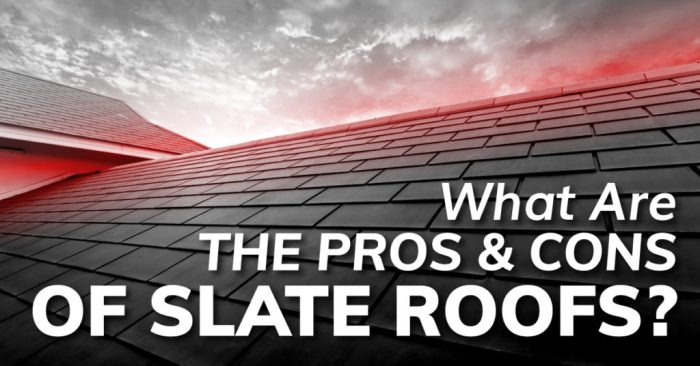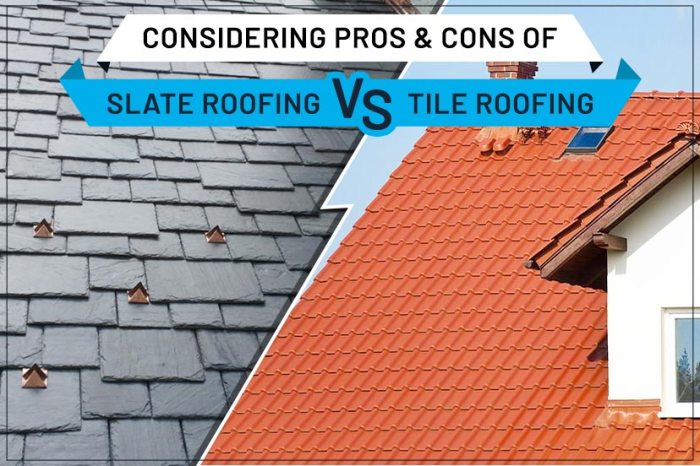Exploring the Pros and Cons of Slate Roofing: A Comprehensive Guide

Delve into the world of slate roofing as we uncover its advantages and drawbacks. This informative piece sheds light on the characteristics, history, and practical aspects of slate roofs, offering readers a well-rounded perspective on this timeless roofing material.
Learn about the durability, aesthetic appeal, and eco-friendly nature of slate roofing, along with the challenges it poses in terms of cost, weight, and maintenance. By the end of this discussion, you'll have a deeper understanding of whether slate roofing is the right choice for your home.
Introduction to Slate Roofing
Slate roofing is a type of roofing material made from natural slate rock, known for its durability, longevity, and aesthetic appeal. Slate is a fine-grained metamorphic rock that can be split into thin layers, making it ideal for roofing applications.
Slate roofing has been used for centuries, with a rich history dating back to ancient times. It gained popularity in Europe during the late Middle Ages and became a symbol of high-end architecture due to its elegant appearance and long-lasting performance.
Types of Slate Used for Roofing
Slate used for roofing can vary in color, texture, and durability based on its origin and geological composition. Some common types of slate used for roofing include:
- 1. Vermont Slate: Known for its uniform texture and durability, Vermont slate is a popular choice for roofing in North America.
- 2. Welsh Slate: Quarried in Wales, Welsh slate is renowned for its deep blue-black color and exceptional quality.
- 3. Spanish Slate: Spanish slate comes in a variety of colors, including grey, green, and purple, adding a unique aesthetic to roofing projects.
Pros of Slate Roofing
Slate roofing offers a range of benefits that make it a popular choice for homeowners looking for a long-lasting and visually appealing roof.
Durability of Slate Roofing
Slate roofs are known for their exceptional durability, with a lifespan of up to 100 years or more when properly maintained. This longevity makes slate a cost-effective option in the long run, as it requires minimal repairs or replacements compared to other roofing materials.
Aesthetic Appeal of Slate Roofs
One of the key advantages of slate roofing is its timeless beauty and elegant appearance. Slate tiles come in a variety of colors and textures, adding a touch of sophistication to any home. The natural look of slate can enhance the curb appeal of a property and increase its overall value.
Eco-Friendly Aspects of Using Slate as a Roofing Material
Slate is a natural material that is sustainable and environmentally friendly. It is mined from quarries and requires minimal processing, reducing the carbon footprint associated with its production. Additionally, slate can be recycled and repurposed at the end of its lifespan, making it a eco-conscious choice for roofing.
Cons of Slate Roofing
Installing a slate roof can be quite expensive compared to other roofing materials, which can be a major drawback for homeowners on a budget. The cost of materials and labor involved in the installation process is significantly higher with slate roofing.
Weight of Slate and Structural Implications
Slate is a heavy material, and this weight can pose structural challenges for some buildings. The existing structure may need to be reinforced to support the weight of the slate tiles, adding to the overall cost of the project.
Maintenance Challenges
While slate is known for its durability and longevity, it still requires regular maintenance to ensure its performance and appearance. Repairing or replacing damaged slate tiles can be a complex and costly process, as matching the existing tiles can be difficult due to natural variations in color and texture.
Installation and Maintenance
When it comes to installing and maintaining a slate roof, there are specific steps and considerations that need to be taken into account to ensure its longevity and durability.
Installation of Slate Roofing
Here is a step-by-step guide on how slate roofing is typically installed:
- Prepare the roof deck by ensuring it is clean, dry, and free of any debris.
- Install underlayment to provide an additional layer of protection against water infiltration.
- Begin laying the slate tiles from the bottom up, starting at the eaves and working your way towards the ridge.
- Secure each slate tile using nails or hooks, making sure they overlap properly to prevent water leakage.
- Finish the installation by adding ridge caps and flashing to ensure a watertight seal.
Maintenance of Slate Roofing
Proper maintenance is essential to prolong the lifespan of a slate roof. Here are some key maintenance tasks:
- Regularly inspect the roof for any damaged or missing slate tiles and replace them promptly.
- Clean the roof surface to remove debris, moss, or algae that can cause water retention and deterioration.
- Trim overhanging branches to prevent damage from falling limbs.
- Check and maintain the gutters to ensure proper drainage and prevent water backup.
Common Issues and Solutions
Despite its durability, slate roofing can still encounter some common issues. Here are a few problems that may arise and how to address them:
- Cracked or broken tiles:Replace damaged tiles with new ones to maintain the roof's integrity.
- Leaks:Inspect the roof for any signs of leaks and repair them immediately to prevent water damage.
- Efflorescence:Clean the affected area with a mild detergent and water to remove white salt deposits.
Sustainability and Environmental Impact

When it comes to sustainability, slate roofing has both positive and negative aspects to consider. Let's delve into the environmental impact of using slate as a roofing material.
Sustainability of Slate as a Roofing Material
Slate is a highly sustainable roofing material due to its longevity and durability. A well-maintained slate roof can last for over a century, significantly reducing the need for frequent replacements compared to other roofing materials. This longevity contributes to a reduction in waste generated from roof replacements, making slate a sustainable choice in the long run.
Additionally, slate is a natural material that does not require chemical treatments, further reducing its environmental impact.
Environmental Impact of Quarrying Slate for Roofing
Quarrying slate for roofing purposes can have a significant environmental impact. The process of extracting slate from quarries can result in habitat destruction, soil erosion, and landscape alteration. It can also lead to water pollution and a decrease in biodiversity in the surrounding areas.
It is essential to consider these factors when opting for slate roofing and choose suppliers that follow sustainable quarrying practices.
Carbon Footprint of Slate Roofing
When comparing the carbon footprint of slate roofing with other roofing materials, slate tends to have a higher initial carbon footprint due to the energy-intensive process of quarrying and manufacturing slate tiles. However, the long lifespan of slate roofs offsets this initial impact over time.
The energy savings from reduced heating and cooling costs, as well as the minimal maintenance required, contribute to the overall environmental benefits of slate roofing.
Closure

In conclusion, the debate over slate roofing pros and cons is a nuanced one that requires careful consideration. While the durability and timeless beauty of slate roofs are undeniable, the associated costs and maintenance requirements must also be taken into account.
Whether you choose slate roofing for its sustainability or aesthetic appeal, understanding both sides of the argument is key to making an informed decision for your home.
Frequently Asked Questions
Is slate roofing expensive to install?
Yes, slate roofing can be costly due to the high-quality material and specialized installation requirements.
How long does a slate roof typically last?
Slate roofs can last for over 100 years with proper maintenance and care.
Does slate roofing require a lot of maintenance?
While slate is durable, it may require occasional repairs and inspections to ensure its longevity.




